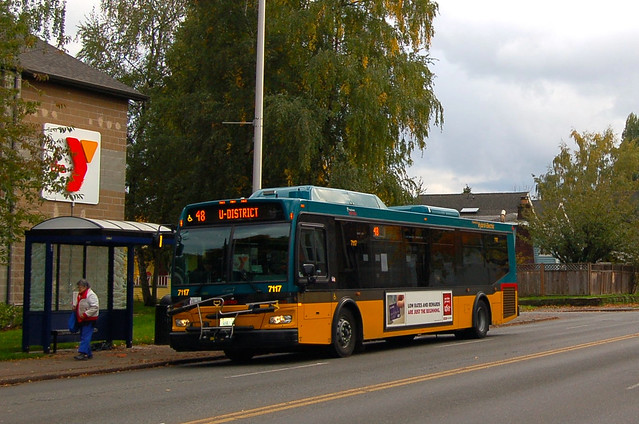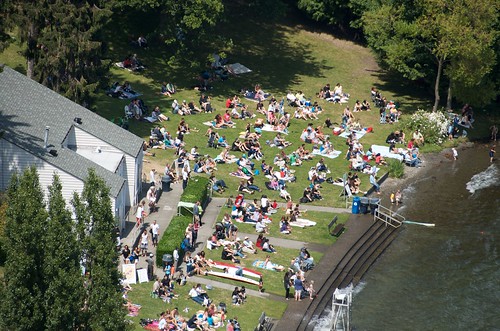In the early 1980s, as Portland was building its first light rail line from downtown Portland to Gresham, the public transit planners in that city decided to make substantial changes to its bus network. Like Seattle now, Portland was served by a large number of bus routes that all headed downtown; if you weren’t going downtown you frequently found yourself there anyway because that was the only place to catch a bus to a different neighborhood.
After the reorganization, the redundancy that came from having so many buses running downtown was reduced, freeing up money to provide service between neighborhoods that were not connected before by bus, and to increase frequency of service along those routes. Service every 15 minutes all-day became the standard, making it easier to transfer between buses. The number of places that could now be reached in the same amount of time that it used to take you to only get downtown increased dramatically.
Last month, King County Metro released two proposals for what bus service could look like after the opening of two new light rail stations north of downtown in 2016. Capitol Hill Station and the University of Washington station are clearly envisioned as jumping off points for a reorganization proposal that will trade current levels of coverage for frequency of service. The first round of public feedback on the proposals closed with the end of March.
With a trip between Montlake and Westlake shaved down to 6 minutes, it makes sense to ask riders to transfer when their trip could become much faster overall. Alternative 1, the more ambitious of the two proposals, has the potential to mirror the transformation that Portland saw 30 years ago. What remains to be seen is how reliable the portions of the new, more frequent transit network that are not in their own tunnel will be. Continue reading


















